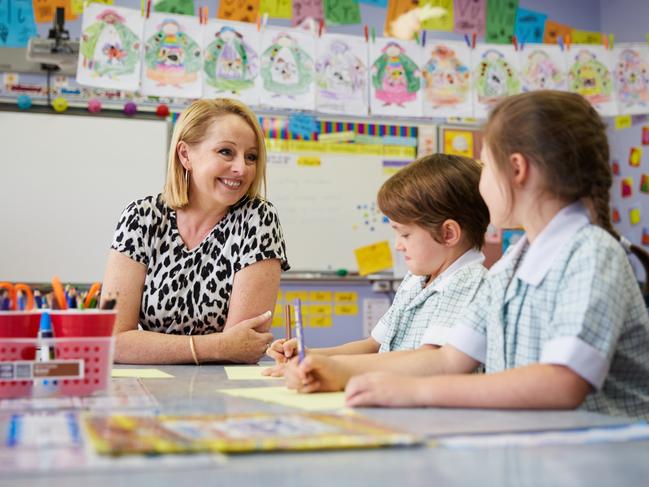Victoria’s newest teachers are bearing the brunt of classroom burnout, and leaving industry early
New teachers are twice as likely to leave the industry as experienced educators, as they bear the brunt of classroom burnout.

Education
Don't miss out on the headlines from Education. Followed categories will be added to My News.
New teachers, who are twice as likely to drop out as experienced educators, are bearing the brunt of educator burnout, new data shows.
Figures obtained by the state opposition under a Freedom of Information application reveal around half as many teachers in their second year renewed their registration compared to those with five years on the job.
The report shows 2563 teachers with two years’ experience renewed their annual registration compared to 3848 with three years, 4086 with four years and 4652 with five years’ experience.
Over half of those who let their registration lapse are aged under 55, which is well below retirement age.
This reflects a recent increase in attrition from the teaching register, from an unusually low 3.3 per cent in 2020 to 4.9 per cent in 2022.
The Herald Sun revealed this week that teacher shortages are costing state taxpayers one million dollars a day in casual relief teacher wages.

The dramatic fall in registration renewals comes despite total teaching registration numbers increasing year on year since 2015, according to Victorian Institute of Teaching (VIT) data.
But the Herald Sun can reveal that these numbers are bolstered by bringing forward pre-service teachers to fill urgent workplace gaps and increased numbers of overseas and interstate teachers.
These pre-service teachers are final year students who are authorised to work in schools to fill Covid workplace shortages. More than 400 such students were given permission to teach in schools in 2022 — the latest figures available.
The figures obtained under the FOI also show that as of June 30, there were 146,469 registered teachers, but around 41,000 teachers are registered but choose not to work in the profession.
Opposition education spokeswoman Jess Wilson said the data “confirms a growing number of teachers are exiting the profession under the Allan Labor government”.
“To ensure every student can access the high-quality education they deserve, teacher attrition and burnout, particularly among graduates and those new to the profession, must be urgently addressed,” she said.
It comes as a recent University of Queensland study of 749 educators found early career and rural and remote teachers appear to be at greater risk of stress and burnout.
“Results showed over half of the sample reported being very or extremely stressed and were considering leaving the profession, with early career teachers, primary teachers, and teachers working in rural and remote areas reporting the highest stress and burnout levels,” lead author Professor Annemaree Carroll said.
These numbers are supported by the most recent Victorian government Teacher Supply and Demand report, which found that one in five teachers will quit the profession within five years and comes as 1,000 roles remain unfilled across the state.
The report also found there will be a shortage of 6000 teachers by 2028 unless incentives are put in place to attract new teachers to the system.
A Department of Education spokesman denied new teachers were leaving the profession in increasing numbers, saying the figures reflected Covid anomalies.
“We have also welcomed almost 1,700 extra teachers employed in our schools over the past year showing the strategies we have in place are working — financial incentives for hard-to-staff roles like in regional areas, paid placements for students training to be teachers and employment-based degrees,” he said.



